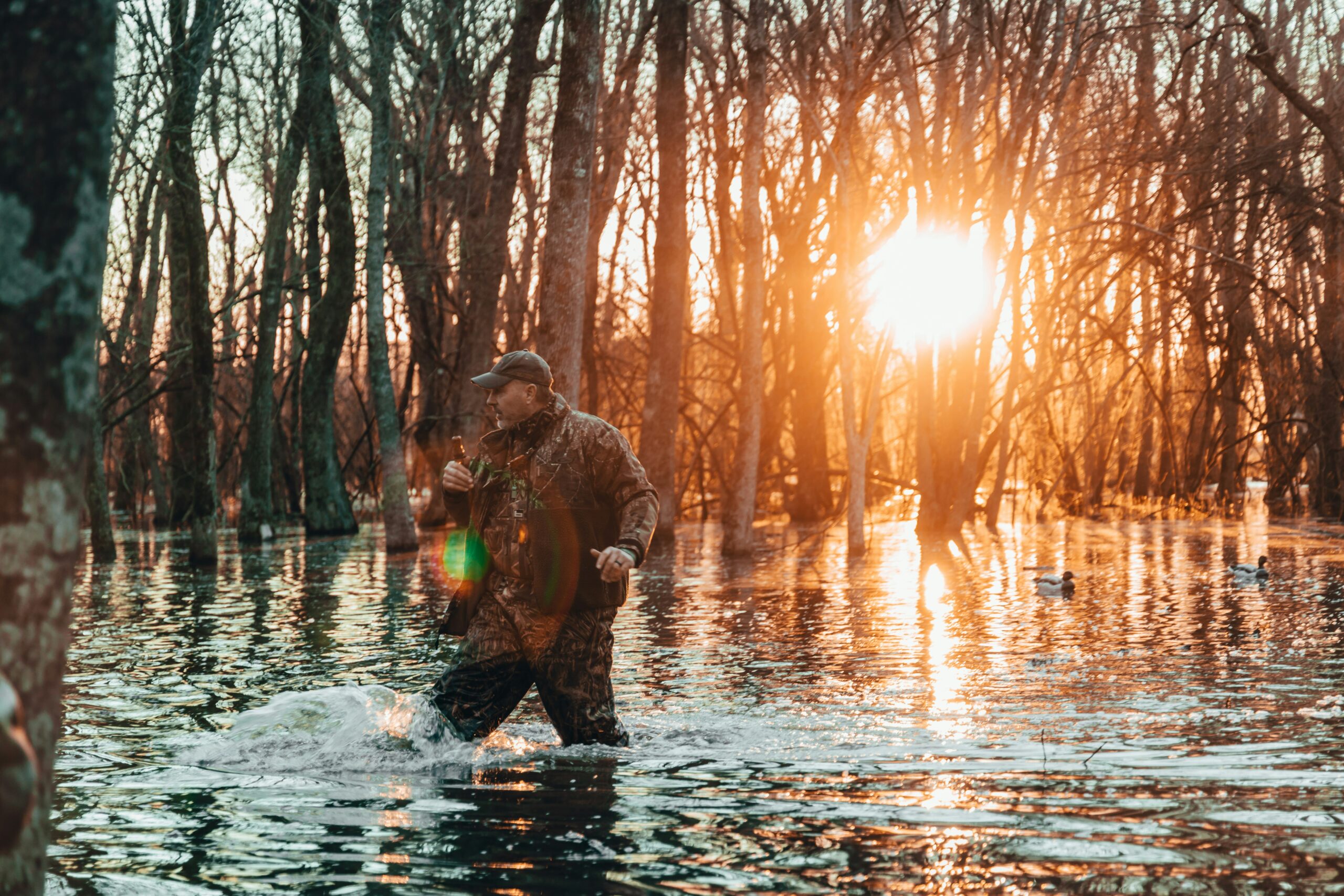Spring scouting is the foundation of a successful hunting season, but wet terrain can throw even seasoned hunters off their game. Rain-soaked ground, thick underbrush, and the unpredictability of spring weather make it both a blessing and a challenge. The upside? Moist earth leaves clearer tracks and more readable signs—if you know what to look for.
In this guide, we’ll break down tried-and-true methods for tracking in soggy spring conditions, helping you make the most of your time in the woods and giving you the edge when it’s time to hunt.
Why Wet Terrain Is a Tracker’s Best Friend—And Worst Enemy
Tracking in spring has a few unique perks:
- Soft ground = clearer tracks
- Muddy crossings expose heavily-used trails
- Rain keeps scent fresh and makes fresh sign stand out
But with the good comes the bad:
- Prints can be distorted by runoff
- Sign can be washed away quickly
- Slippery conditions make travel tough
Understanding how to adapt your tracking strategy in spring is what separates a casual scout from a serious hunter.
1. Know What Fresh Sign Looks Like (in the Wet)
💡 Key Indicators:
- Sharp-edged tracks in mud that haven’t filled in are fresh (within hours).
- Moist droppings mean an animal passed recently. Steaming? Even better.
- Broken vegetation that hasn’t started to wilt is fresh.
- Muddy smears on rocks or logs often show where deer or elk have walked or jumped.
Pro Tip: Spring rain softens ground so much that even squirrels leave prints. Focus on track depth and stride consistency to separate big game from critters.
2. Track Funnels and Pinch Points
Waterlogged terrain reveals where game likes to move—because they don’t want to slog through mud either. Look for:
- Ridge lines or dry humps that funnel movement
- Game trails that cross creeks at narrow points
- Edges of flooded fields or timberline transition zones
Animals often skirt the worst terrain just like we do. These travel corridors are gold mines for reading movement patterns.
3. Study Beds and Feeding Areas
In spring, new forage is popping up—especially in clear cuts, south-facing slopes, and field edges.
🦌 Deer and Elk Beds in Wet Conditions
- Dry indentations in grass or leaves surrounded by muddy prints suggest a fresh bed.
- If the ground beneath is still warm or moist, you’re close.
- Multiple beds? That’s likely a group pattern you can build on.
🐗 Hog Wallows
- Pigs love to root and wallow in soft spring mud.
- Look for churned-up areas near water, and follow fresh trails to feeding zones.
4. Time Your Scouting Trips Wisely
To read spring sign well, timing matters:
- After light rain: Best time for clean, readable tracks.
- Early morning: Morning dew softens the topsoil but hasn’t yet been disturbed by thermals or wind.
- Two days post-storm: Tracks won’t be too fresh, but long-term travel patterns are easier to assess.
Avoid days with heavy, fresh downpours unless you’re actively following hot sign—you’ll spend more time soaked and sliding than gaining real insight.
5. Use Technology to Compliment Your Tracking
Even old-school trackers use a little tech these days. Consider:
- OnX or HuntStand to mark sign and establish patterns
- Cell trail cams on trails or water crossings
- Digital compasses and weather apps to track wind and forecast changes
Use these tools to confirm what you’re seeing on the ground and build long-term strategies.
6. Footwear and Safety in Wet Conditions
Muddy ground can be a twisted ankle waiting to happen. Always wear:
- Waterproof boots with good ankle support
- Gaiters to keep debris and moisture out
- Wool socks (they stay warm even when wet)
And don’t forget:
- Trekking poles help navigate slick slopes
- Tick protection is a must in the wet, green spring woods
7. Interpreting Sign Across Different Species
🦃 Turkeys
- Look for V-shaped tracks in muddy logging roads or food plots.
- Fresh scratching in leaves near clearings = feeding zone.
- Droppings are another clue: J-shaped = tom, curly = hen.
🦌 Whitetail
- Deep tracks = mature buck.
- Narrow, zig-zagging trails can signal a doe group.
- Rubs from last fall still matter—see which ones are revisited in spring.
🐻 Black Bear
- Huge, flat rear paw tracks stand out in soft ground.
- Look for over-turned logs, claw marks on trees, and scat with berry residue.
Final Thoughts: Put in the Miles
The biggest key to tracking in wet spring terrain? Time and patience. No article, app, or shortcut replaces boots on the ground. The more you scout, the more you’ll recognize subtle sign and anticipate animal movement.
So get out there—embrace the mud, slow your pace, and start building a mental map of your hunting area. By the time fall rolls around, you’ll have the edge—and the confidence—to put yourself in bow or rifle range.


